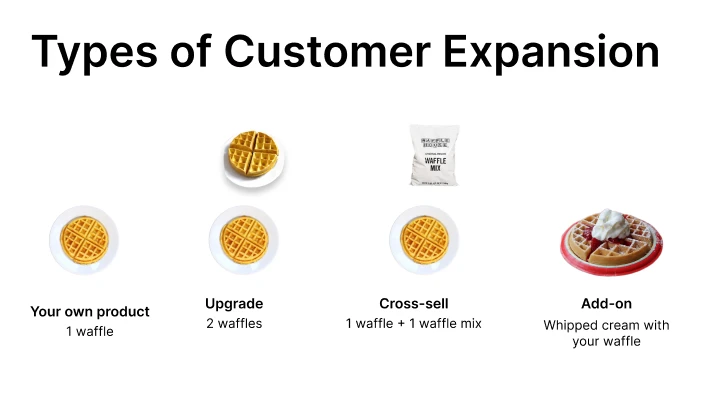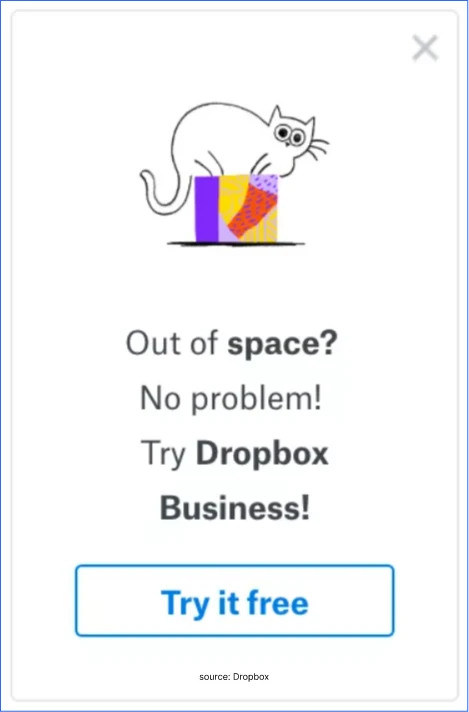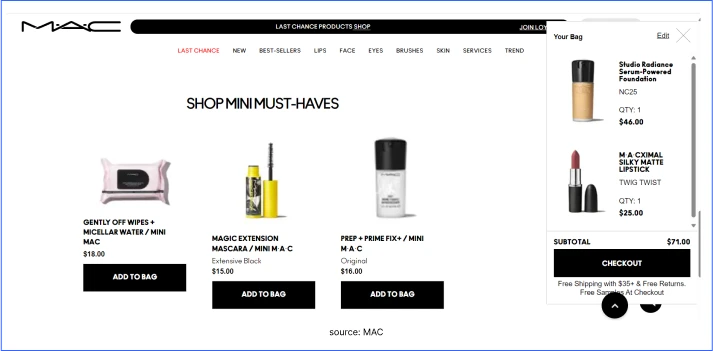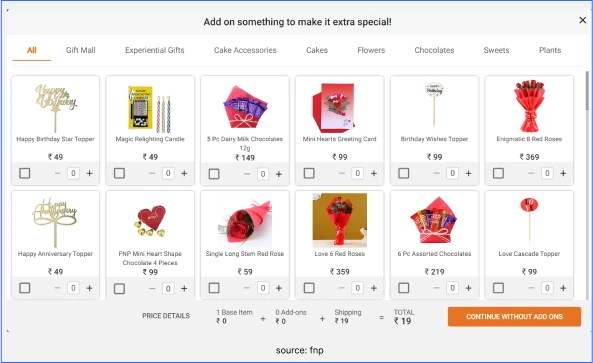Customer Expansion Guide: Definition, Types and Strategies
- March 5, 2024
- 11 mins read
- Listen

Table of Content
Getting new customers and keeping them around is important for a business. But there’s another key to success: expanding on the customers you already have. This means finding ways to offer more value to your existing customers, bringing in extra money in the process. It’s easier to sell more to someone who already knows and likes what you offer than to find a brand-new customer.
Think about it: getting a new customer can be five times more expensive than keeping an old one. Just imagine all the time, effort, and resources spent on getting new people to buy from you. That’s why companies are placing a strong emphasis on renewing customer subscriptions. However, when it comes to scaling up, relying solely on renewals is not enough.
That’s where a customer expansion strategy comes in handy. In this article, we’ll talk about why it’s important and discover how it can contribute to achieving consistent, long-term revenue growth, even in the face of uncertain economic conditions.
What is Customer Expansion?
“Customer expansion means making current customers happy and convincing them to buy more. This helps companies keep customers around and saves money compared to getting new customers.”
To expand, companies use strategies like selling more to current customers (upsells), offering related products (cross-sells), and adding extra features (add-ons). This is a smarter way to expand your customer base because it costs less than getting new ones. It’s useful for businesses in every domain, especially in software (like apps), where the focus is on getting more people to use and enjoy the product.
Why Customer Expansion is Important?
Getting new customers is tough in today’s competitive business world. Companies are facing fierce competition and working with limited resources, making it challenging to convince someone to say “yes” to your product without proving its value first.
One way to achieve more lasting growth is by your existing customer base expansion. This approach focuses on showing your current customers the additional value your product or service can provide.
By expanding to current customers, you aim to make them buy more and use your product or service regularly. If you succeed, you’ll keep your existing customers and avoid the costs of trying to attract new ones.
For companies keeping an eye on the churn rate is crucial. If more people are leaving your service than joining, it can lead to problems. The churn rate can be influenced by various factors, such as subscribers not continuing after a free trial or cancelling after a few months.
To boost revenue, focus on providing a smooth customer experience, enhancing satisfaction, and offering extra value. You can capture your users’ interest by upgrading your product, suggesting complementary items, or adding features for subscription-based services.
Now that you have an idea about its importance let’s explore the three types of customer expansion.
3 Main Types of Customer Expansion
There are three primary types of customer expansion:
- Upgrade or Upselling: Companies persuade customers to purchase a pricier premium version of the product or service they’ve chosen.
- Cross-selling: It involves a company suggesting additional products that complement the chosen item.
- Add-ons: Companies provide extra features to enhance the product or service that customers are already using.
To visually see the differences among these three types, here’s one example explained with waffles!
Upgrade or Upselling for Customer Expansion
If people are already using your product, consider offering extras. This way, users can improve their experience by adding extra features through special plans.
Those days are gone when companies used to wait until users ran out of their current plan’s resources before suggesting an upgrade. Things have changed. For example, Dropbox has taken a great approach to offering upgrades to its customers.
Dropbox uses prompts to let users know about the limitations of their free accounts. They offer the chance to upgrade at any time for more storage space. This approach has proven to be effective and beneficial.
Cross-Selling for Customer Expansion
Cross-selling and upselling both want customers to buy more, but they go about it in different ways.
Upselling tries to make customers spend more on what they already use. On the other hand, cross-selling wants customers to pay more for a related product.
For example, if you’re looking for lipstick on MAC’s website, they might suggest buying some mini must-haves as well. This is an example of cross-selling in action, even in the beauty product world.
Add-Ons for Customer Expansion
Add-ons come into play when someone is already using the main product (they can’t be used on their own). You can give users the chance to enhance their product by buying additional services or products.
Here’s an example from the well-known brand Ferns N Petals, which delivers gifts worldwide for special occasions. They provide add-ons to enhance your gift by offering additional items. For instance, if you order a birthday cake, they suggest extras like candles, flowers, or even balloons to make the celebration extra special. It’s a smart strategy to increase your product range and, as a result, boost sales.
What is a Customer Expansion Strategy?
A Customer expansion strategy, commonly referred to as customer growth or a customer expansion plan, refers to a set of initiatives and tactics aimed at increasing revenue and extracting greater value from existing customers.
Rather than concentrating solely on acquiring new customers, companies adopting a customer expansion strategy strive to optimize the lifetime value of their existing customer base. This approach acknowledges the significance of current customers as valuable assets and aims to strengthen relationships with them.
Top 10 Powerful Customer Expansion Strategies for Business Growth
We talked about the 3 main types of customer expansion. Now, how do you actually do it? Simply offering upgrades or showing extra products on your website isn’t sufficient.
To boost your sales and profits, you must choose effective methods to connect with customers and get them interested. Companies following a strategy to get more customers should pay attention to various factors to make the most of opportunities at the right moment. So, how to use customer expansion to boost sales? We have 10 smart customer expansion strategies for you to think about.
1. Deliver Outstanding Customer Service
Growing your customer base isn’t just about getting new customers; it’s also about keeping the ones you already have with great customer service. Be proactive by helping customers when they visit your website, mobile apps, or social media. Listen to what customers say through feedback and keep making your services better based on their suggestions.
Focus on solving problems and going above what customers expect; this makes them want to stick with your business. If you consistently give excellent service, not only will you keep your current customers happy, but they’ll also tell others about your business, helping it grow in a steady and positive way.
Wondering how to implement these strategies effectively? Well, there are numerous customer support tools available in the market, and I’d like to suggest considering REVE Chat. It stands out as one of the best AI-enabled customer support software options, allowing you to provide instant assistance across various platforms such as web, apps, Facebook, Viber, Instagram, Telegram, and WhatsApp. With its AI chatbot, your business operations, including customer service, can run smoothly even when your agents are busy or after business hours.
REVE Chat boasts advanced features like co-browsing, ticketing systems, voice and video chat, analytics, and more, providing your company with a competitive edge. Curious to try it out? SIGN UP today to take advantage of its 14-day FREE TRIAL.
2. Create a Sense of Urgency
To get people to buy things quickly, marketers use FOMO (Fear of Missing Out) tricks, like setting time limits or bundling products. They use many ways, like ads and messages, to make you want to buy. These tricks make you feel like you might miss out if you don’t buy right away. This helps them sell a lot in a short time. If you can make a good message and offer, your customers might buy something on the spot.
3. Offer Premium Feature Trials
A good way to get people to upgrade to a better product or service is by giving them a chance to try your premium services for free first. When users try it out, they can see the benefits and value it offers. After the free trial ends, they can decide to buy the better plan to achieve their goals.
4. Keep Customers Informed about New Updates
Let your customers know about any new products or plans you have. Just inform them about your upcoming product launches or upgrades in advance. When they check them out, they might buy or switch to fancier plans with extra features. Reach out to them through social media, emails, web push messages, and chatbots.
5. Utilize Email Campaigns for Upselling
If you’ve got different subscription plans or extras to offer, email can really help you reach more customers.
Most times, businesses send “sales” emails when they’re reaching out to new people or trying to get free users to pay. But guess what? You can also sell more stuff to existing customers through email marketing. First, find out what your customers want before sending emails. Then, let them know about your offers. You can make really good email campaigns and send them to people on your list.
6. Offer Personalized Deals
Using the details you know about your customers—like their preferences or buying history—you can create special offers just for them. This personal touch increases the likelihood that customers will be interested in additional products or upgrades.
When customers feel that your team is genuinely taking their needs into consideration, they are more likely to opt for these extra offerings. This personalized approach builds a stronger connection between your business and the customers, enhancing the overall satisfaction and likelihood of them choosing additional services or upgrades.
7. The Perfect Time Matters
Selecting the right moment to propose additional services to your customers is very important. Don’t make them feel pushed into upgrading. Instead, wait until they fully understand how valuable your product is.
Once they recognize its true worth, you can then suggest extra offerings that will enhance their subscription, providing them with even more benefits. This patient and thoughtful approach ensures that customers are more likely to appreciate and accept the additional services you propose.
8. Actively Listen to Customer Feedback
Keep an eye out for chances to expand your business by paying attention to customer feedback. When customers ask questions or share concerns, they usually want a helpful response.
If you’re careful with every email, phone call, or live chat interaction from customers, you might uncover opportunities to guide them towards better and more advanced features, helping your business grow. It’s all about being attentive and ready to spot these chances when they come up.
9. Tailor the User Interface to Address Customer Challenges
A great time to suggest customers upgrade or add extras is when they’re using your product. Make the screens they see special for them, considering any issues they might be having, and show them a good offer. Also, be sure to really pay attention to what they want, what they like, and their whole experience while setting up the screens they see.
10. Regular Upgrades for Your Offerings
To keep your current customers happy and stick to your brand, always come up with new ideas. Keep an eye on what’s happening in your industry and use new technologies to give solutions that are even better than what your customers expect. To make your product offerings valuable all the time, you have to understand what your customers want, and always find ways to make things better.
Drive Revenue Growth with Customer Expansion
Rather than always trying to get new customers, focus on giving more to the ones you already have. Not only does customer expansion increase your monthly income, but it also makes each customer more valuable over time. Using this approach also helps you handle churn by finding out what might make them go away or what could make them want to stick around for more.







